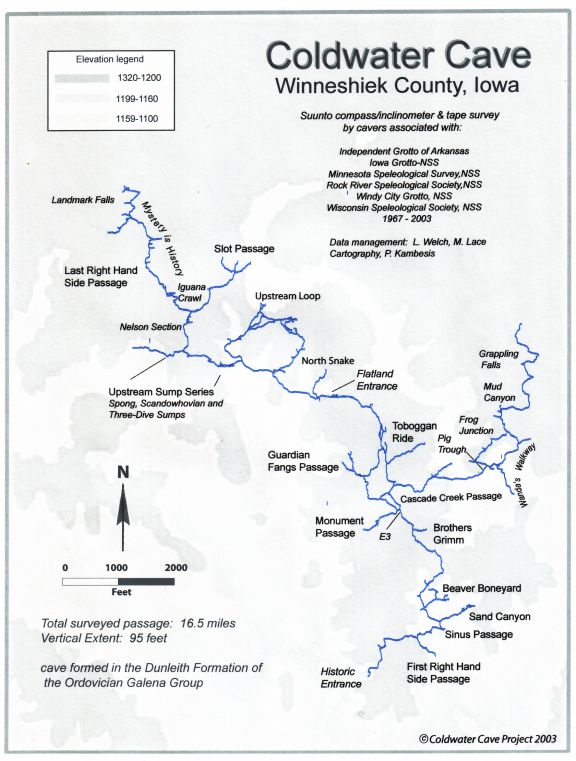| bbbbbbbbbb | Documentation at Coldwater Cave |
|
Survey, Resurvey and Inventories
|
|
|
 |
|
|
|
Photographic Documentation and Photomonitoring
Photography is an important part of any exploration for it is only through visual images that a sense of the cave can be truly conveyed. For the past 17 years, Scott Dankof (IA) has been carefully documenting all areas of the cave. Dankof, whose cave images have garnered many awards at the NSS Photo Salon, not only shoots photos of the pretties, he also photodocuments restored areas, and other significant features of the cave. At the other end of the photography spectrum is Mark Jones who with his endless supply of disposable cameras has managed to take some decent photos of exploration efforts in extremely remote areas of the cave where no one has yet dared to take "real " photo equipment. Others who have participated in photodocumentation in the cave include John Lovaas, Ed Klausner and Mike Lace. See the Photo Gallery for examples of photodocumentation in Coldwater Cave.
Historic Documentation
A detailed historical log was compiled of all the Project work, including the discovery of the cave, by drawing on firsthand accounts from principal contributors since the cave's discovery in 1967. The log is continually updated and functions as an important resource tool in historical documentation, and monitoring traffic and its impact on the cave. From the current log (which has records for 872 individual trips into the cave as of March 2003), its been documented that 60% of all trips have been for exploration/survey, 20% for casual touring, 10% for photodocumentation and 10% for research and restoration.
copyright 2003 (C) Coldwater Cave Project